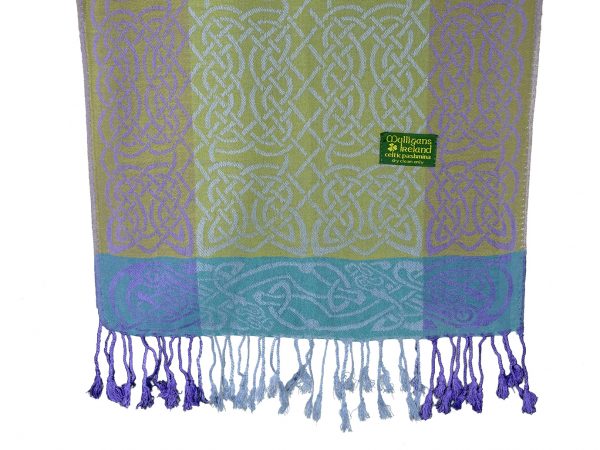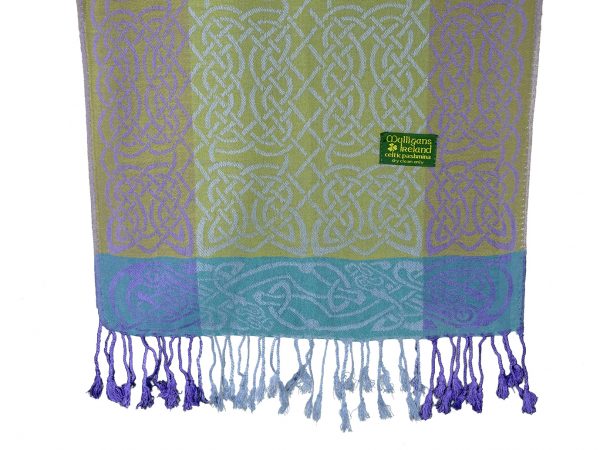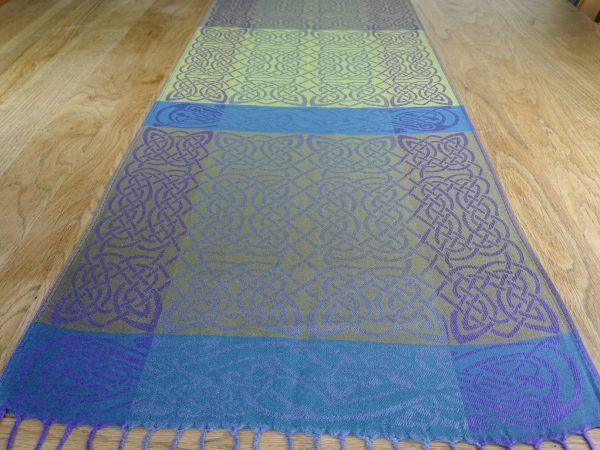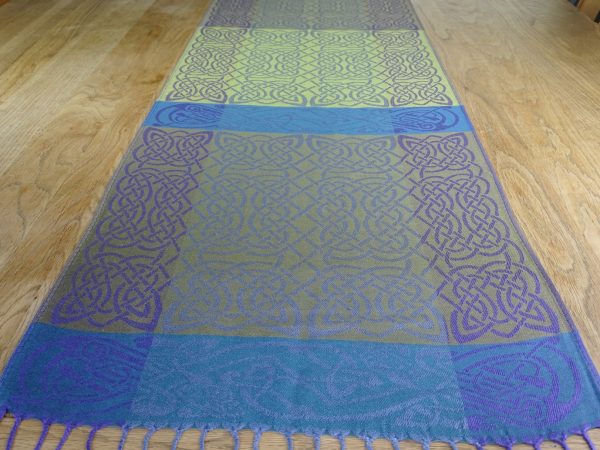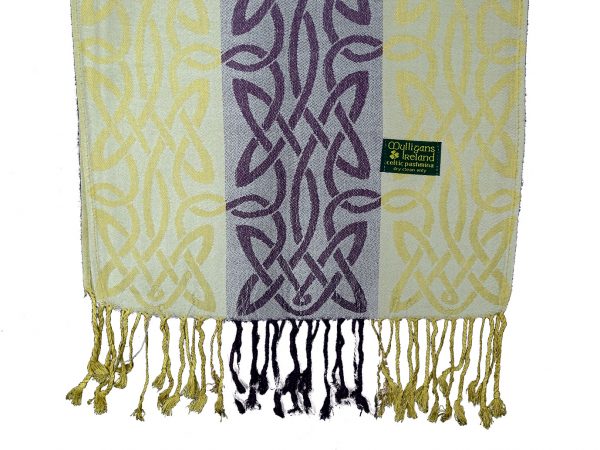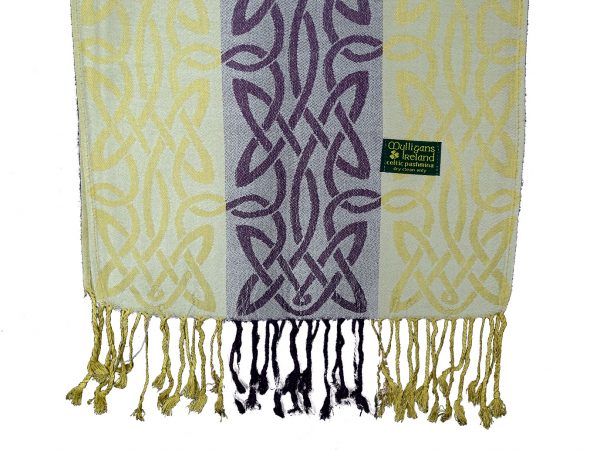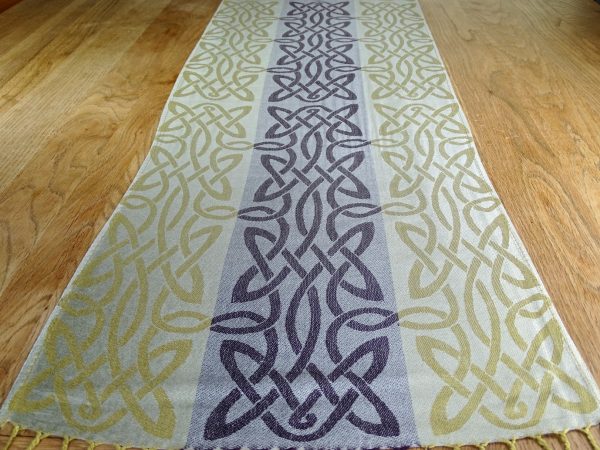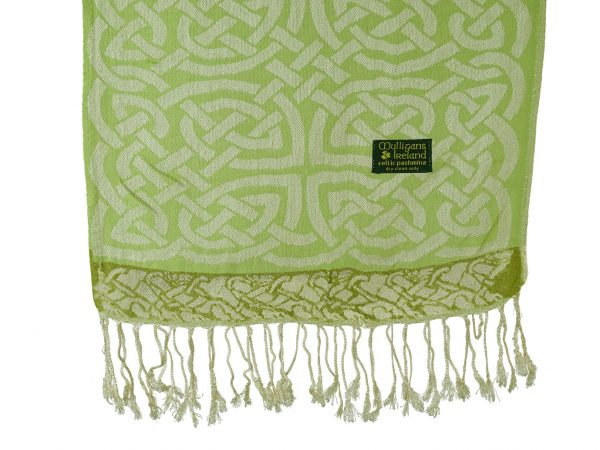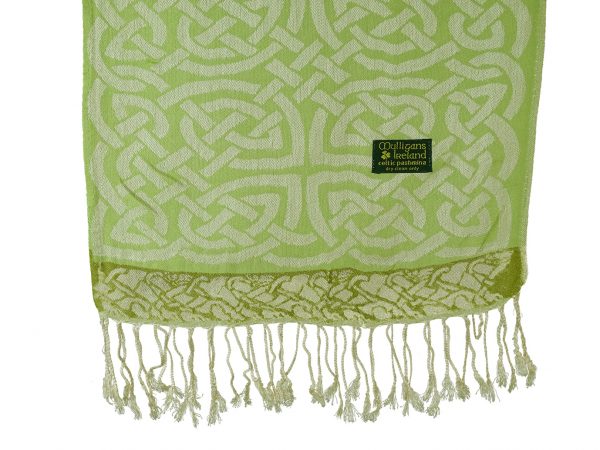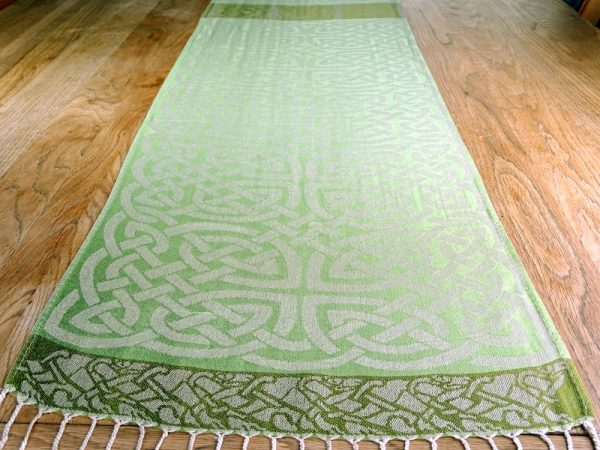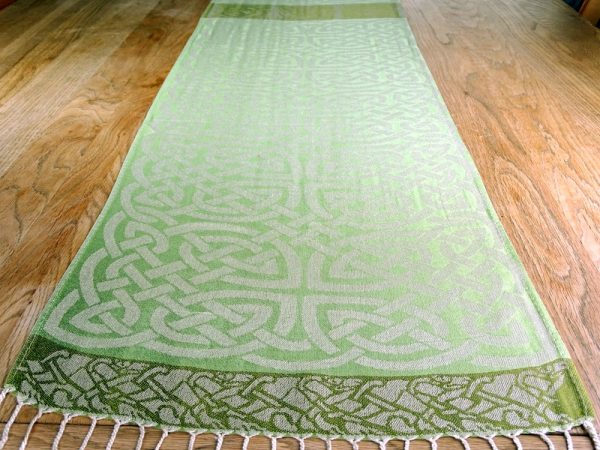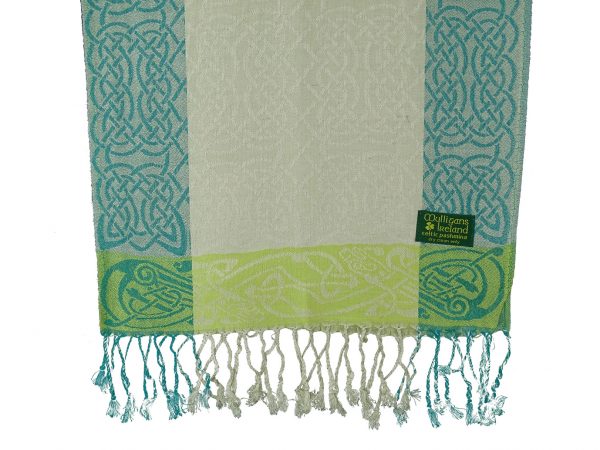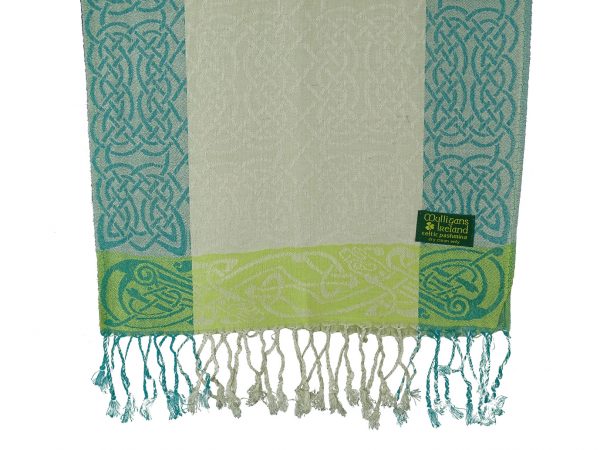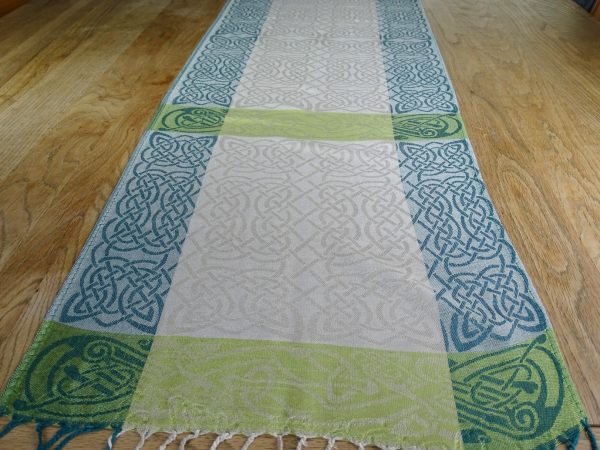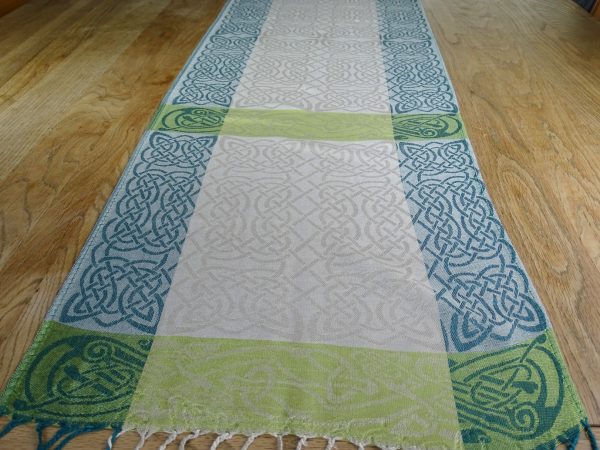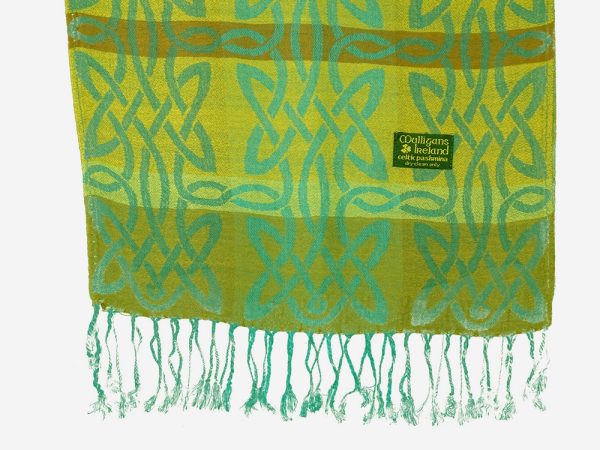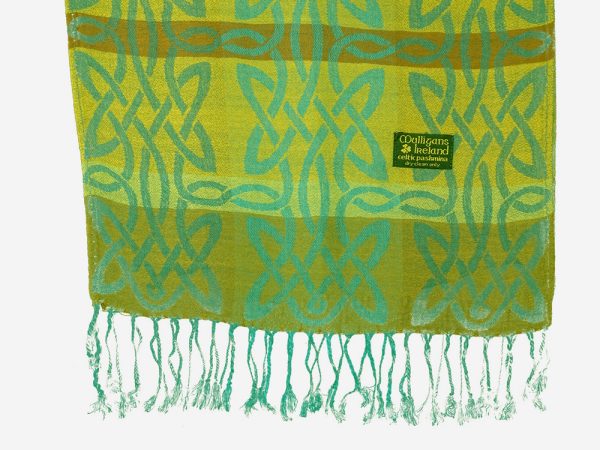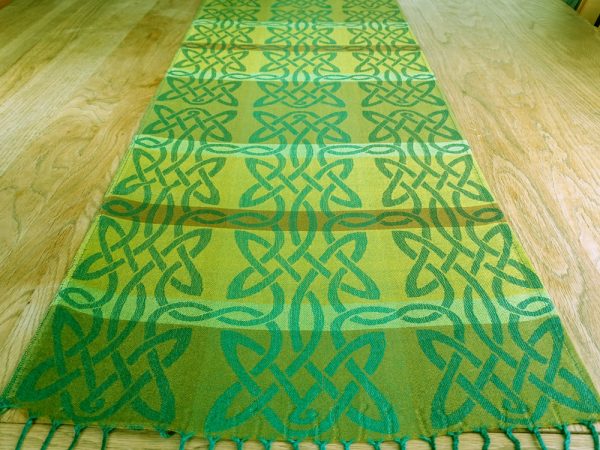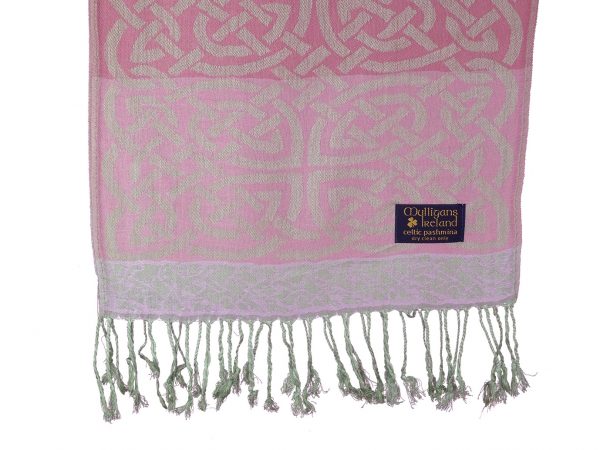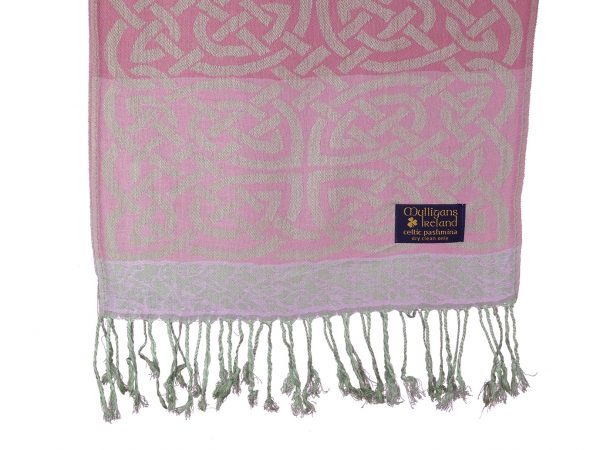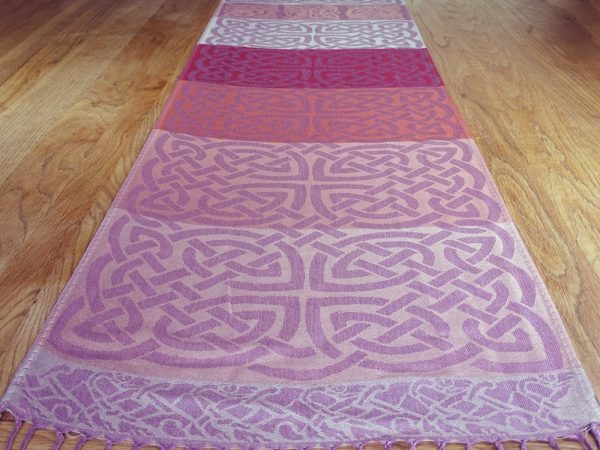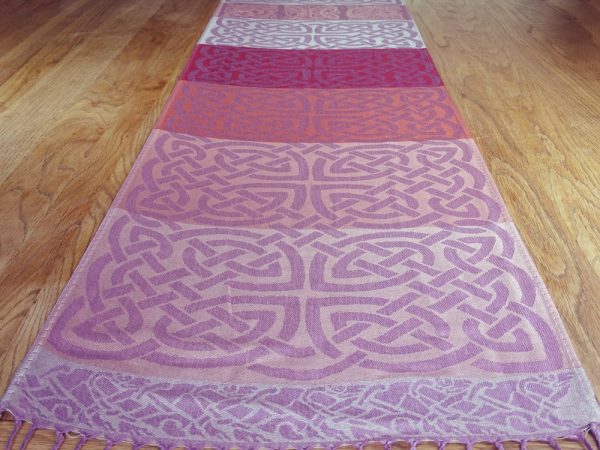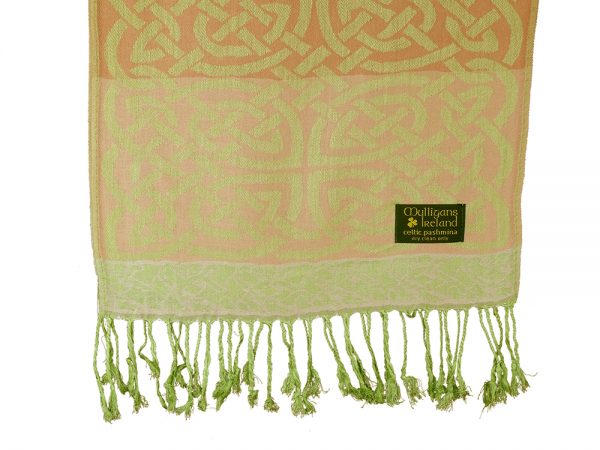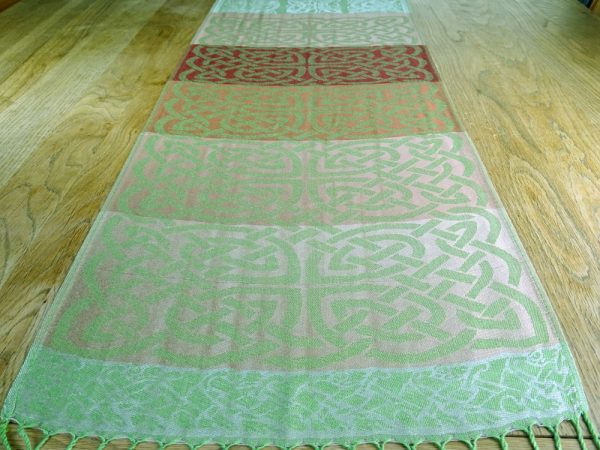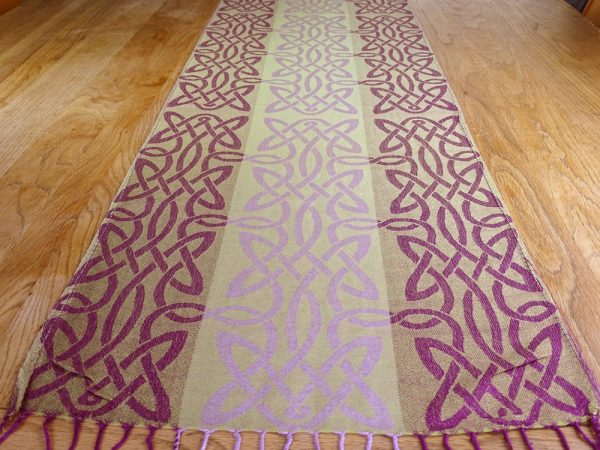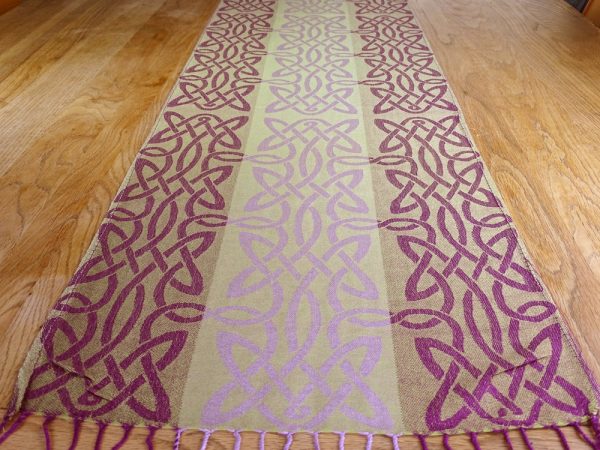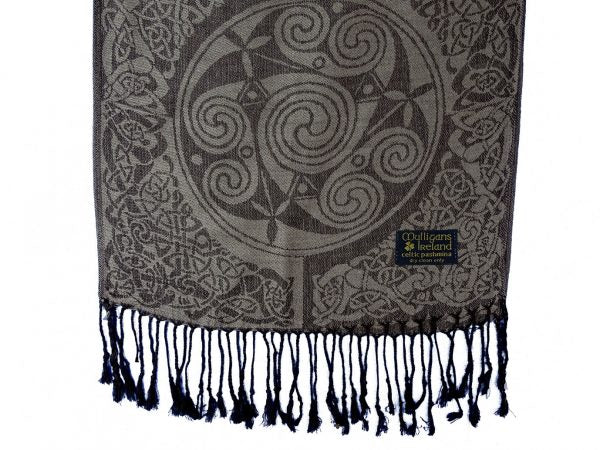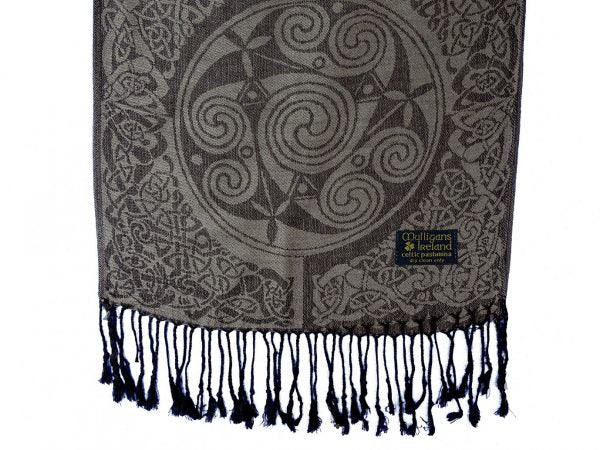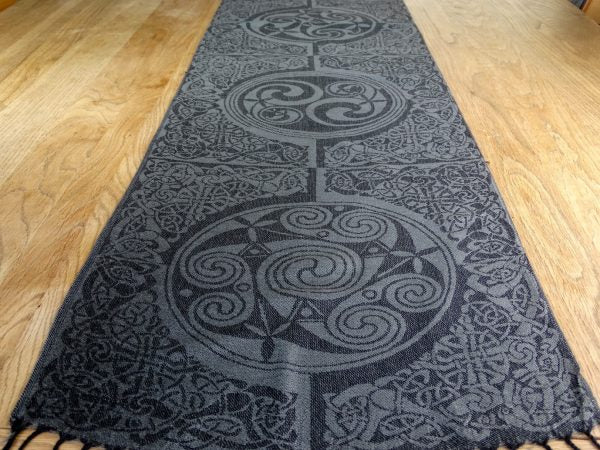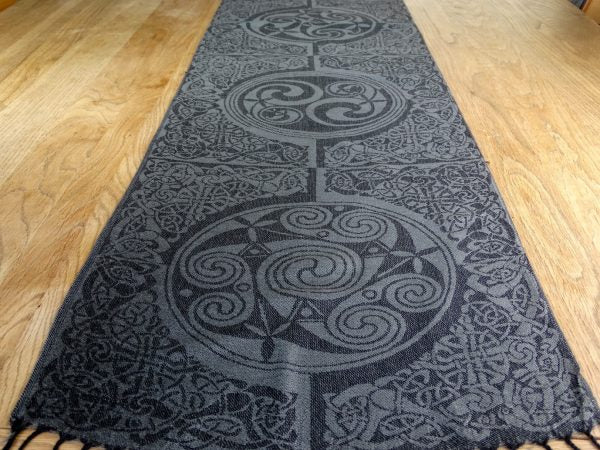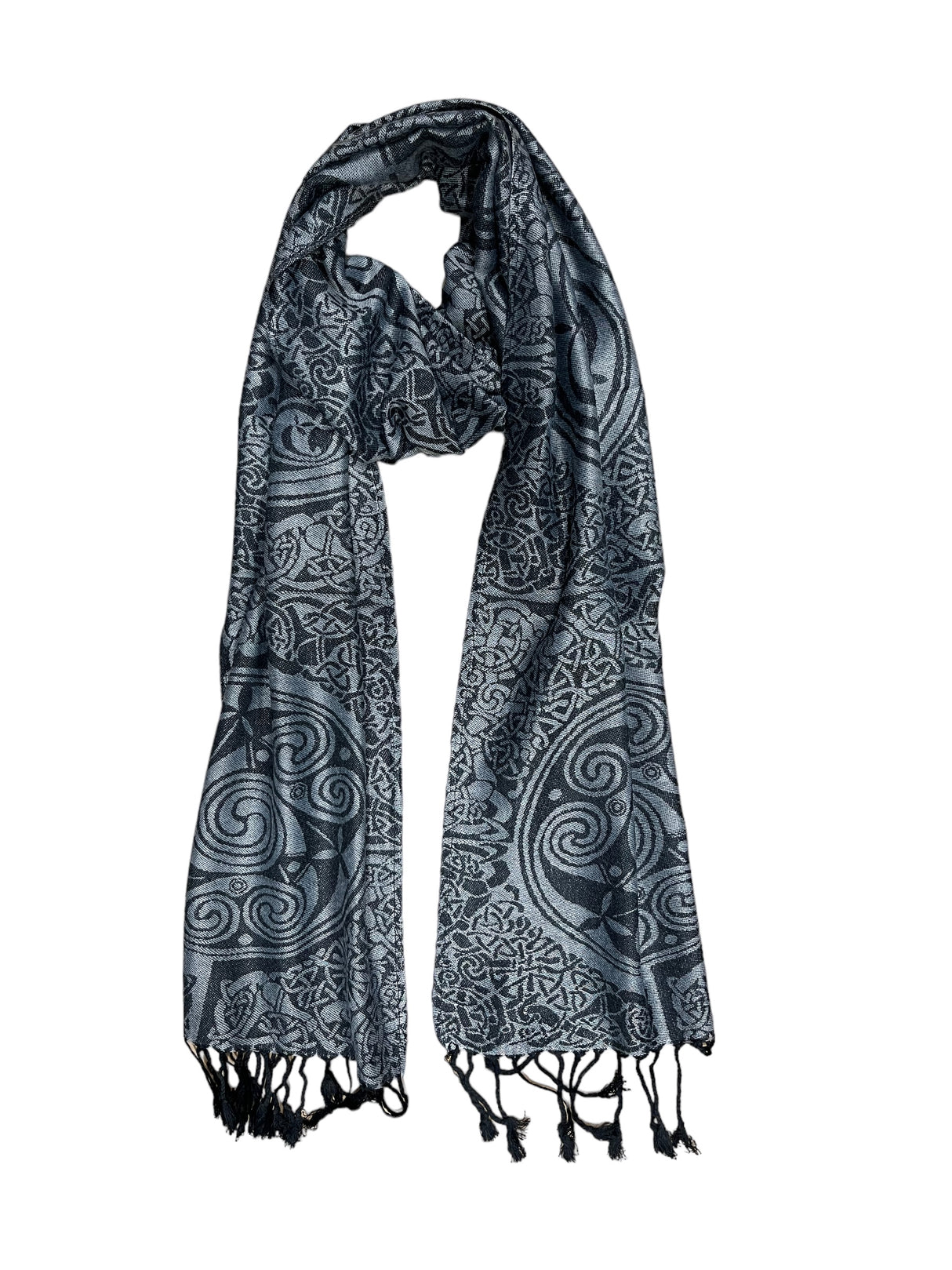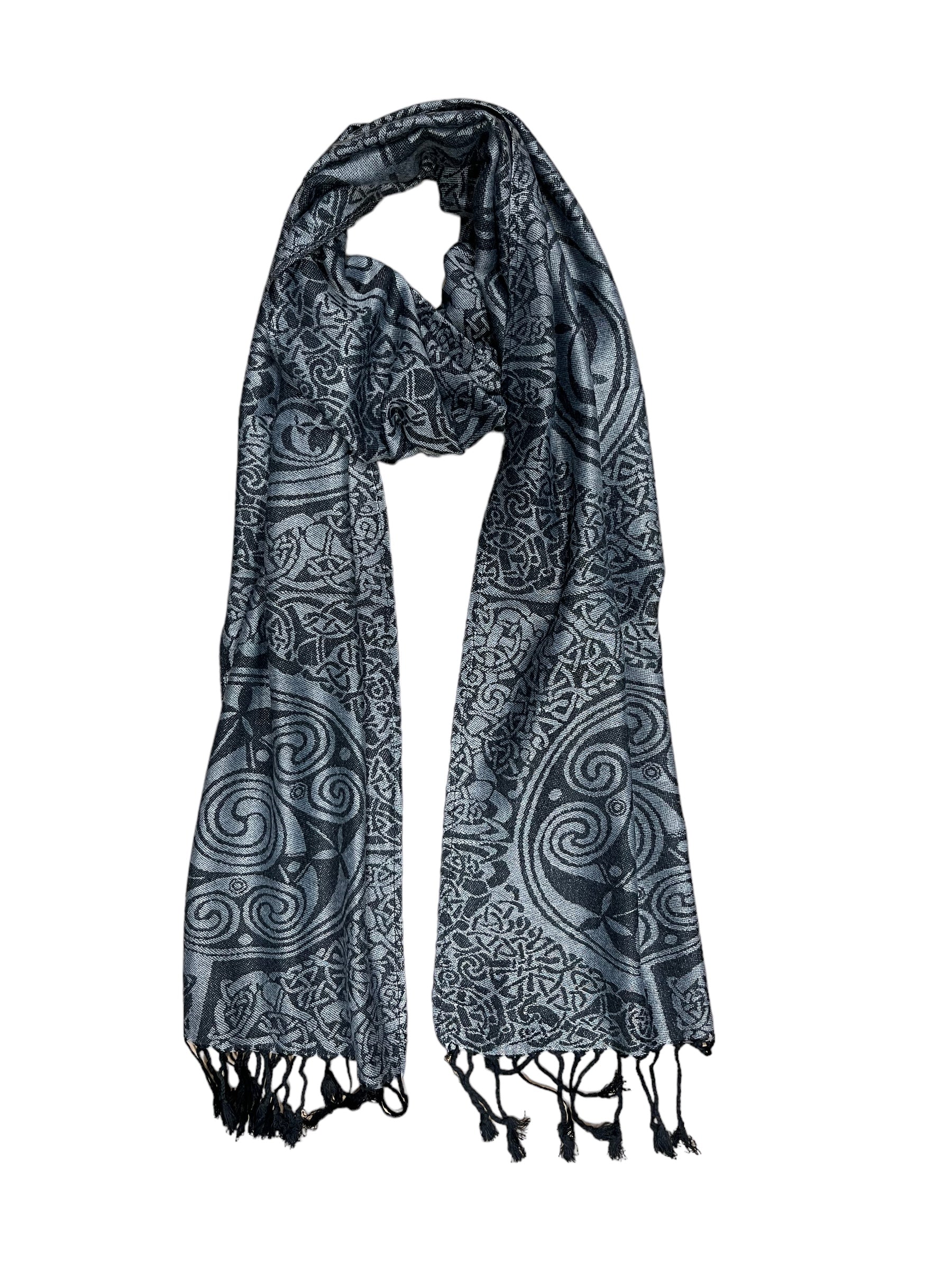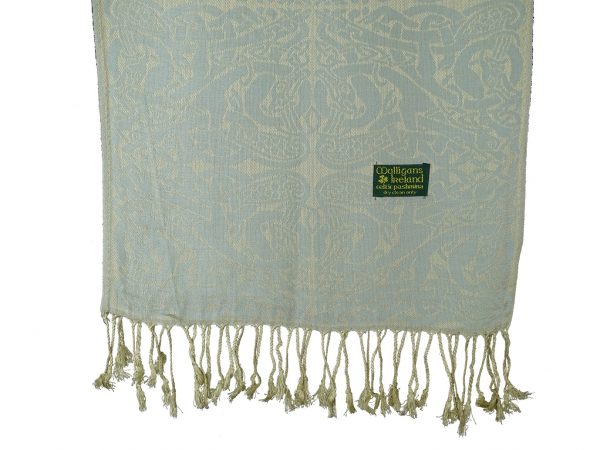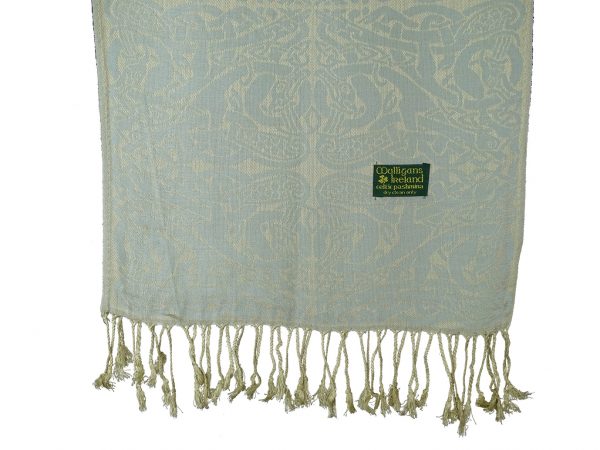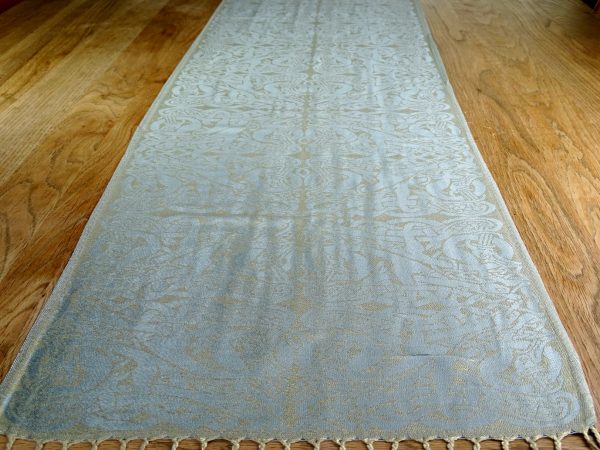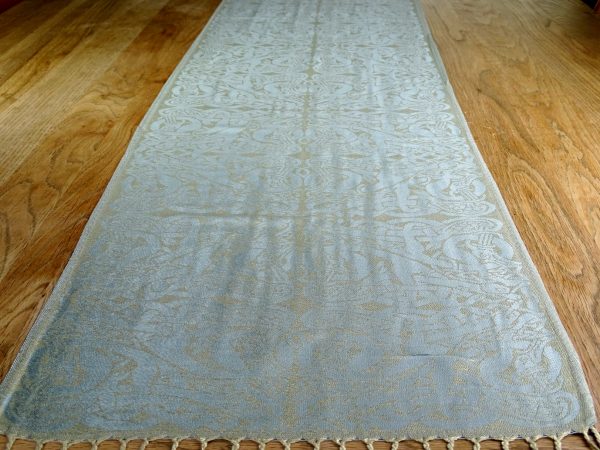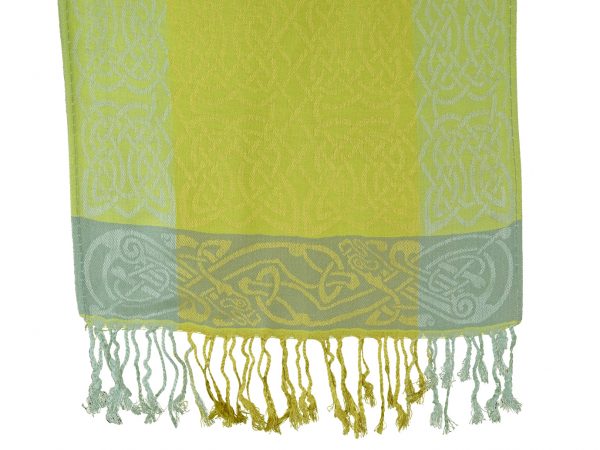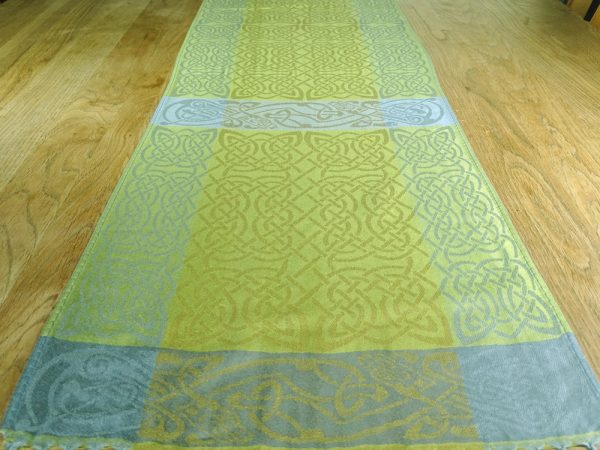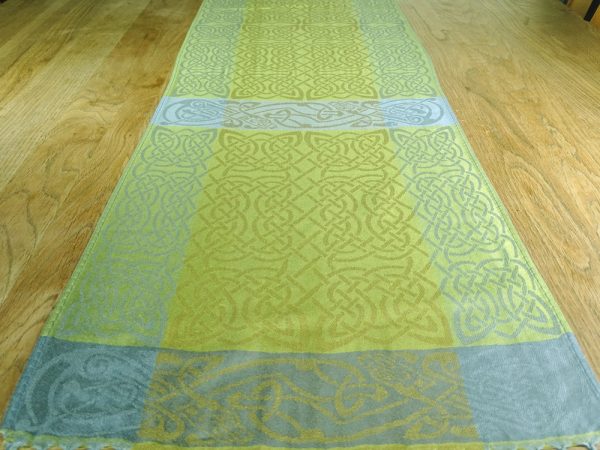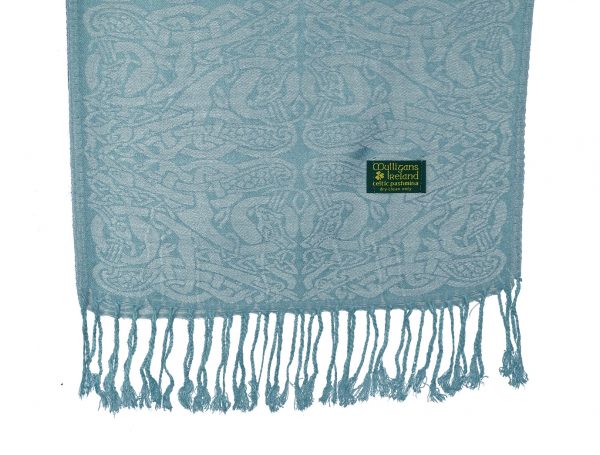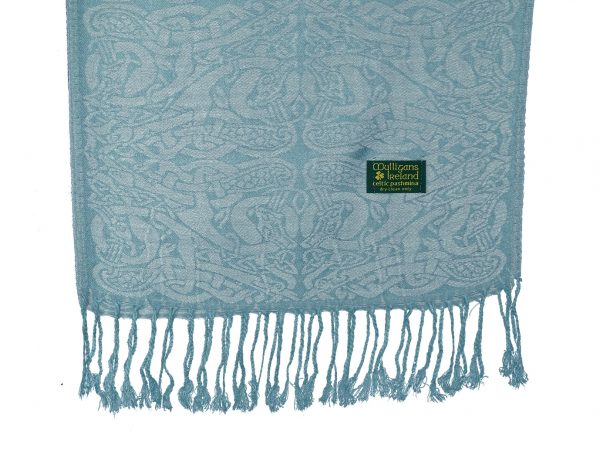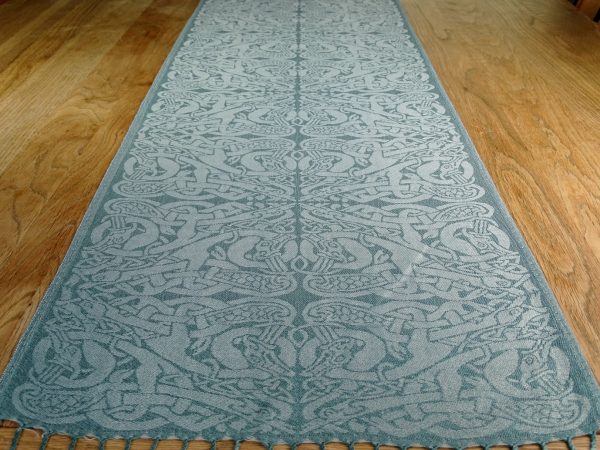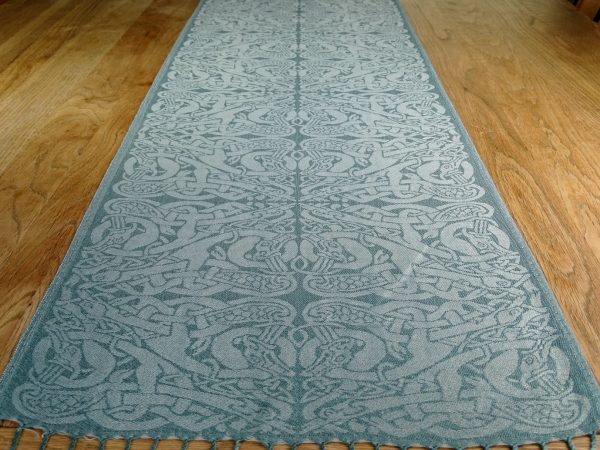Women's Celtic Pashmina Scarf
Women's Celtic Pashmina Scarf - Rathlin is backordered and will ship as soon as it is back in stock.
Shipping & Delivery
Shipping & Delivery
Your order is usually shipped within 24 hours after we receive it. Sometimes sooner, we always try our best. Shipping rates are calculated at checkout, and we offer free shipping on US orders over $120.
We only ship to US addresses.
Returns & Exchanges
Returns & Exchanges
Returns can be made up to 30 days from date of your order being delivered to you.
All garments must be unworn, unwashed, and have all the tags still attached to the garment with packaging intact.
Any and all postage costs are the responsibility of the customer. Please make sure to insure the item(s) you are exchanging as we are not responsible for lost or damaged products that are returned to us. We recommend you add tracking also.
Description
Description
Women's Celtic Pashmina Scarf.
Beautiful soft and lightweight Celtic design Pashmina scarves for Women.
- Designed in Ireland
- 60% Silk and 40% Pashmina Wool blend
- Imported
Each scarf is named after an island around the coast of Ireland.
Caher - County Mayo.
Caher Island lies off the coast of Co Mayo and is Barely one mile in length, however among local fishermen it is considered to be one of the holiest islands of Connaught. Some believe miraculous cures can be achieved by lying overnight in St Patrick’s bed, (Leaba Phádraig), or by drinking water from St Patrick’s well. For generations sailors would lower their sails and say a little prayer when sailing close to its shore. One sailor who showed no such respect however was the infamous Pirate Queen, Grace O’Malley, who landed on Caher Island to capture a MacMahon follower who killed her Spanish lover.
Dalkey - County Dublin.
Remains have been found on Dalkey Island Co Dublin which prove that it was inhabited as far back as 2,500 BC, and the island has a long and colourful history of saints and Viking raiders. Fancy being King for a day? In the eighteenth century the title: ‘King of Dalkey, Emperor of the Muglins, Prince of the Holy Island of Magee, Elector of Lambay and Ireland’s Eye, Defender of his own faith and Respecter of all others, Sovereign of the illustrious Order of the Lobster and Periwinkle” was bestowed upon a different ‘facetious’ King each year at an annual island festival.
Feenish - County Galway.
Feenish Island, south Connemara A callous land agent once tried to burn down the house of a family on Mweenish Island for non-payment of rent. The agent had already destroyed a handful of houses on nearby Feenish Island. When the burning party set out for Mweenish, the priest urged all the Feenish islanders to sink to their knees and pray. The story goes that God heard the people’s cry and a bolt of lightning shot out from the Heavens and struck the agent dead before he could do their neighbours harm.
Achill - County Mayo.
Located off the west coast, in County Mayo, it is the largest of the country’s many islands. Much has been written about Achill, but perhaps a lesser known claim to fame is the fabled existence of the Dobhar Chu, a mythical lake monster, in Sraheens Lough on the island. Irish folklore is littered with legendary ghoulish water creatures, but few are as scary as Dobhar Chu (pronounced do-war coo), or ‘Hound of the Deep’. The creature is believed to live in many Irish lakes, but the largest number of sightings have been on Achill. Providing another link with Ireland’s close cultural neighbour Scotland, the Dobhar Chu is apparently considered to be a relation of the famous Lough Ness monster.
Cathaigh - County Clare.
Inis Cathaigh or Scattery Island lies in the Shannon Estuary, off the coast of Kilrush, County Clare. The island was founded by St. Senan (Senán mac Geircinn), a prominent sixth century Munster saint. he was renowned for his sanctity and miracles. Inis Cathaigh became not only a famous abbey but the seat of a bishopric with St. Senan as its first bishop. only men were allowed on Scattery Island while Senan was there, legend has it that when his sister, St. Conainne died, she willed it that she would be buried near Senan. To stay true to his own edicts, Senan waited till low tide to bury her in the inter-tidal zone, which was not strictly the “island”, thus fulfilling his sister’s wish.
Arranmore - County Donegal.
Arranmore lies off the coast of Donegal.Over half the population are native Irish speakers, and the island forms part of the Donegal Gaeltacht.One of the darkest times in Arranmore’s history was during the time of the Great Famine in the mid 1800s. Reports tell of the terrible suffering endured by the islanders; food was scarce and disease became rife, with dysentery, scurvy and typhus assuming “epidemic levels”. The plight of the islanders came to the attention of a group of Quakers and in 1847 they hired two steamships in Liverpool to deliver peas, rice, meal, biscuits and beef to the starving islanders. Later in 1847, after successive potato crop failures, islanders who couldn’t show title were being forced off their small strips of land and sent to Glenties workhouse, or offered berths on so-called “coffin ships” across the Atlantic.
Inishbofin - County Galway.
The mist-swathed island of Inishbofin lies off the coast of Connemara in County Galway. Inishbofin (Inish-bo-finn) means ‘island of the white cow’, Legend has it that the island was once shrouded by an enchanted fog which rendered it invisible to humans. two fishermen drifted ashore one day and lit a fire on the beach. the mist cleared, and they saw that they were between the ocean and a lake. They could make out a woman driving a white cow into the lake with a stick The woman, whom they discovered to be a witch, struck the cow with her stick and it turned to stone. The hapless fishermen themselves were turned into rocks as they lay hands on her. Local folklore has it that, every seven years, an enchanted white cow rises from the lake heralding a period of peace and prosperity.
Inishtrahull, County Donegal.
The most northerly island of Ireland, lying north of Donegal. in centuries past, as millions of emigrants left their homeland bound for the “New World” one emigrant recalled:
“Inishtrahull lighthouse was the last glimpse we would have of Ireland and everyone stayed on deck until it disappeared. They stayed on when they couldn’t see it anymore because the more keen sighted kept saying it is still there. When the sharp eyed ones admitted the light had faded all frivolity ceased, handkerchiefs came out and there was much sniffing as we drifted without word to our cabins. The next stop was New York”
Inishmore - County Galway.
Inishmore (Árainn) is the largest of the Galway Aran Islands and is an extension of the famous limestone rocks of The Burren. The landscape of Inishmore is a patchwork of fields hemmed in by precariously balanced dry stone walls. The rugged landscape and unique culture of Inishmore and the other Aran islands has provided inspiration to artists and poets over the centuries, and W.B.Yeats famously advised J.M. Synge to ‘Go to the Aran Islands, and find a life that has never been expressed in literature’. Synge followed the advice, and it holds good for anyone wishing to experience the unique blend of landscape and culture found on the islands. It is said that a visit to Inishmore will remain in the heart for eternity.
Rathlin - County Antrim.
Rathlin Island lies off the north coast of Antrim near the ‘Giants Causeway’. Local legend tells of the ‘Children of Lir’ King Lir had four children one girl, Fionnuala, and three sons, Aodh and twins, Fiachra and Conn. Jealous of the children’s love for each other and for their father, their wicked stepmother Aoife used her magic to turn the children into swans condemned to wander through Ireland until the spell could be broken by a monks blessing. Aoife herself was punished for this act transformed by her father into an air demon for all eternity.
Keeragh - County Donegal.
According to legend, InishKeeragh was once part of a larger island known as Inis-fithi. On the 16th of March in the year 804, there was ‘a great storm of thunder, lightning, and wind, which exceeded so much in violence all the storms ever before witnessed, and so terrified the people, that it was recorded among Ireland’s Wonders’. when the people of the coast looked out the following morning on St. Patrick’s Day, they found the island of Inis-fithi divided into three parts. The largest of these is what we now know as Inish-Keeragh, and the portions severed from the main body are the two masses of rock which rise out of the waves north of the island.
Payment & Security
Your payment information is processed securely. We do not store credit card details nor have access to your credit card information.
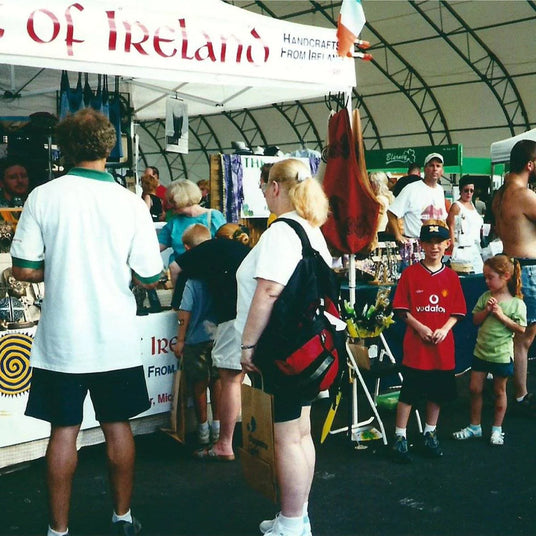
From Ireland to you
Learn more about our mission to bring you the best of Ireland.



